
Panay is the sixth-largest and fourth-most populous island in the Philippines, with a total land area of 12,011 km2 (4,637 sq mi) and a total population of 4,542,926, as of 2020 census. Panay comprises 4.4 percent of the entire population of the country. The City of Iloilo is its largest settlement with a total population of 457,626 inhabitants, as of 2020 census.
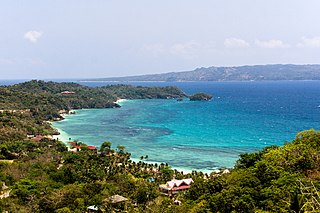
Aklan, officially the Province of Aklan, is a province in the Western Visayas region of the Philippines. Its capital and largest town is Kalibo. The province is situated in the northwest portion of Panay Island, bordering Antique to the southwest, and Capiz to the southeast. Aklan faces the Sibuyan Sea and Romblon province to the north.

Malinao, officially the Municipality of Malinao, is a 4th-class municipality in the province of Aklan, Philippines. According to the 2020 census, it has a population of 24,517 people.

Kalibo, officially the Municipality of Kalibo, is a first-class municipality and capital of the Province of Aklan, Philippines. According to the 2020 census, it has a population of 89,127 people.

The Kalibo Santo Niño—Ati-Atihan Festival, also simply called Ati-Atihan Festival, is a Philippine festival held annually in January in honor of the Santo Niño in several towns of the province of Aklan, Panay Island. The biggest celebration is held during the third Sunday of January in the town of Kalibo, the province's capital. The name Ati-Atihan means "to imitate the Ati people".

Banga, officially the Municipality of Banga, is a 3rd class municipality in the province of Aklan, Philippines. According to the 2020 census, it has a population of 40,318 people.

Batan, officially the Municipality of Batan, is a 4th class municipality in the province of Aklan, Philippines. According to the 2020 census, it has a population of 33,484 people.

Ibajay, officially known as the Municipality of Ibajay, is a 3rd class municipality in the province of Aklan, Philippines. During the creation of Aklan Province in 1956, Ibajay was its biggest municipality in terms of population. According to the 2020 census, Ibajay has a population of 52,365 people, making it the third most populated town in Aklan.
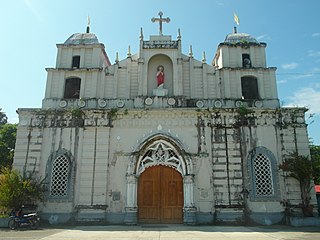
Lezo, officially the Municipality of Lezo, is a 5th class municipality in the province of Aklan, Philippines. It is the smallest municipality in the province both by population and by land area, and even by revenue. According to the 2020 census, it has a population of 15,639 people.

New Washington, officially the Municipality of New Washington, is a 3rd class municipality in the province of Aklan, Philippines. According to the 2020 census, it has a population of 47,955 people.

Numancia, officially the Municipality of Numancia, is a 4th class municipality in the province of Aklan, Philippines. Because of its proximity to the Capital Town of Kalibo, majority of its baranggays are classified as urbanized making the municipality the second most densely populated municipality in the province with 1,200 inhabitants per square kilometres. According to the 2020 census, it has a population of 35,693 people.
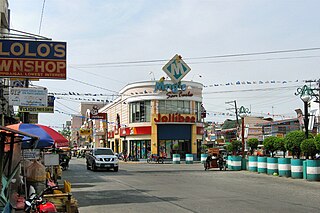
San Carlos City, officially the City of San Carlos, is a 3rd class component city in the province of Pangasinan, Philippines. According to the 2020 census, it has a population of 205,424 people. It is the most populated city in Pangasinan and the entire Ilocos Region.
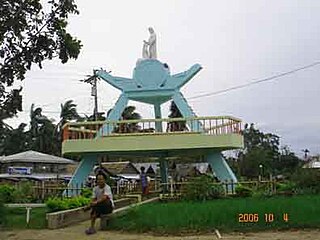
Pambujan, officially the Municipality of Pambujan, is a 4th class municipality in the province of Northern Samar, Philippines. According to the 2020 census, it has a population of 35,532 people.

Sogod, officially the Municipality of Sogod, is a 2nd class municipality in the province of Southern Leyte, Philippines. According to the 2020 census, it has a population of 47,552 people.
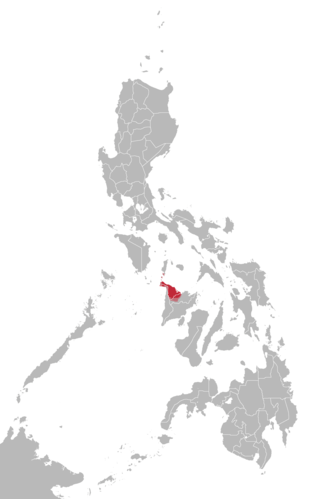
Aklanon (Akeanon), also known as Bisaya/Binisaya nga Aklanon/Inaklanon or simply Aklan, is an Austronesian language of the Bisayan subgroup spoken by the Aklanon people in the province of Aklan on the island of Panay in the Philippines. Its unique feature among other Bisayan languages is the close-mid back unrounded vowel occurring as part of diphthongs and traditionally written with the letter ⟨Ee⟩ such as in the autonyms Akean and Akeanon. However, this phoneme is also present in other but geographically scattered and distant Philippine languages, namely Itbayat, Isneg, Manobo, Samal and Sagada.
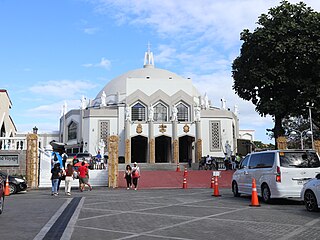
The Diocese of Antipolo is a Latin Church ecclesiastical territory or diocese of the Catholic Church in the Philippines that comprises the Province of Rizal and the city of Marikina in Metro Manila.
This is a list of notable events that happened in the Philippines in the year 1897.

Juan dela Cruz is a 2013 Philippine television drama series broadcast by ABS-CBN. Directed by Malu L. Sevilla, Avel E. Sunpongco, Francis E. Pasion, Jojo A. Saguin, and Darnel Joy R. Villaflor, starring Coco Martin. It aired on the network's Primetime Bida evening block and worldwide on TFC from February 4 to October 25, 2013 replacing Princess and I and was replaced by Honesto.

The Nineteen Martyrs of Capiz, more commonly known anachronistically as the Nineteen Martyrs of Aklan refers to a group of Filipino revolutionaries in Panay who were executed for advancing the cause of the Katipunan during the Philippine Revolution against Spain. All individuals were native to towns in Capiz, which are now in the modern province of Aklan.
Ángelo Fernández is one of the Nineteen Martyrs of Aklan, Filipino patriots who were executed by musketry in Kalibo, Aklan, Philippines on March 23, 1897 2: a.m, for cooperating with the Katipunan during the Philippine Revolution against Spain.

















